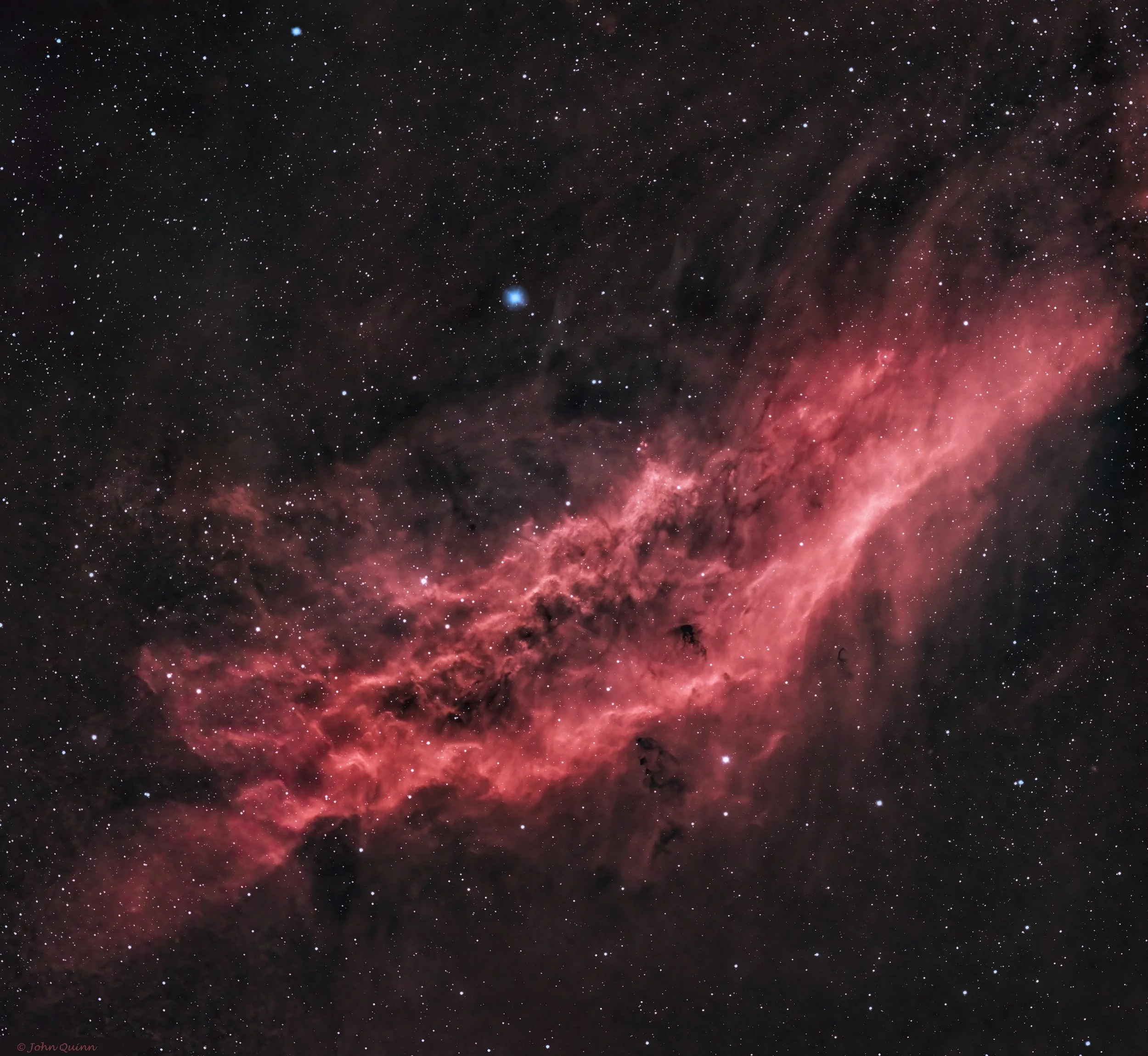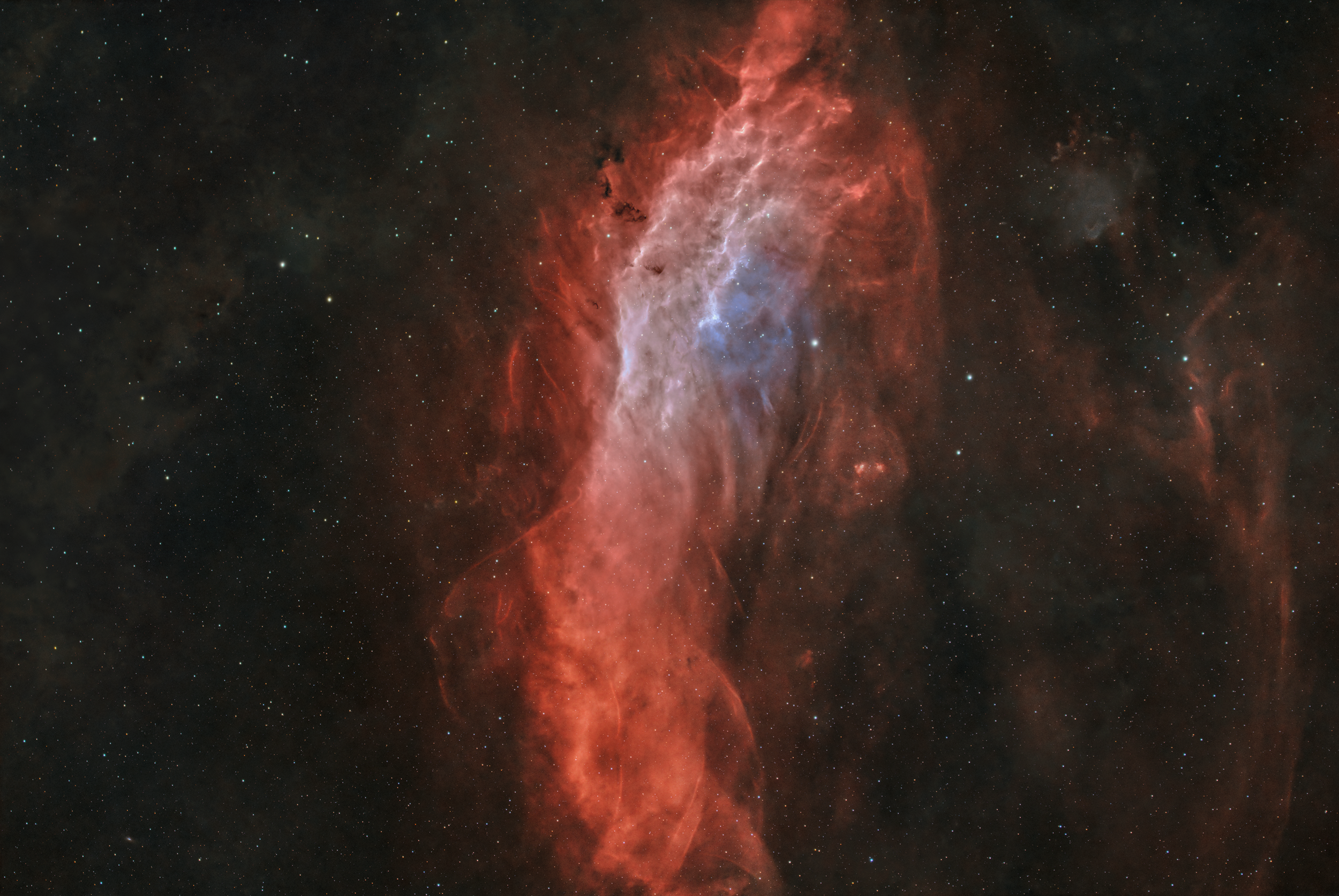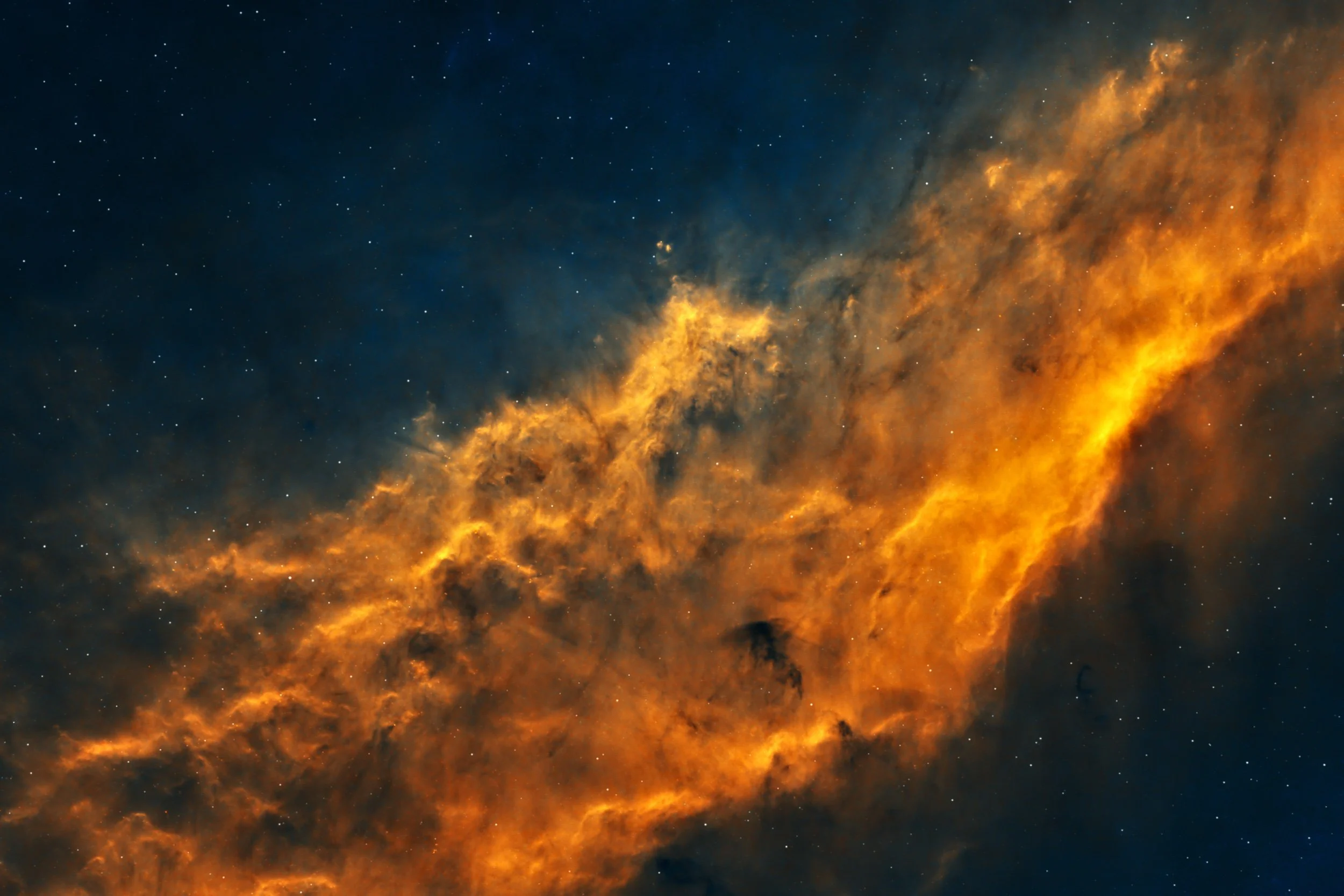
AAPOD2 Image Archives
Sort 2025 By Month: January | February | March | April | May | June | July | August | September | October | November | December
California nebula
Image Description and Details : NGC 1499 and IC 2005 combine to make up what is known as the California Nebula due to its long and narrow outline. About 1000 light years from Earth, this emission (primarily hydrogen alpha and beta) nebula is at least partially energized by the bright massive star above it in this image (Xi Persei with a total luminosity estimated at 263,000 times that of our sun).
RASA 8, ASI071 MC PRO, EQ6-R PRO, ASIAIR PRO, Radian Triad Ultra, about 26 cumulative hours, Bortle 6
Copyright: John Quinn
California Nebula
Image Description and Details :
The California Nebula. 110 hours of integration, imaged for 29 nights over the course of 2 months.It seems rare that I see images of the California Nebula with more than 40-50 hours, so I wanted to pile on a lot of data and see what details I could bring out.Imaging details:Imaging Telescope: OPT Telescopes TPO UltraWide 180 f/4.5Imaging Camera: ZWO Astronomy Cameras ASI2600MC ProMount: Sky-Watcher USA EQ6-R ProFilters:Baader Planetarium Fringe Killer 2"Optolong Astronomy Filter L-eXtreme 2"Accessories: ZWO ASIAIR Plus, ZWO EAFBaader Fringe Killer 2": 350×5″ (29′ 10″)Optolong L-eXtreme 2": 818×480″ (109h, 4min)
Copyright: Jeffrey Horne
California Nebula
Image Description and Details : A favourite deep-sky target of astrophotographers is NGC 1499, the California Nebula. The California Nebula is found in the Orion Arm of our Milky Way galaxy, and has been given its informal nickname because its shape resembles the outline of the US state of California. It is a large emission nebula stretching across almost 2.5 degrees of the night sky in the constellation Perseus, with an apparent magnitude of 6.0 and lies approximately 1,000 light-years away. It is very well imaged in broadband filters as well as the narrowband Hubble palette seen here.
Telescope: Takahashi FSQ106-ED F/3.6
Camera: ZWO ASI 2600MM Pro CMOS
Mount: Paramount MX
Observatory : RoboScopes, Spain.
Sii = 51 x 240s
Ha = 38 x 240s
Oiii = 51 x 240s
Total integration = 9h20m
Software = PixInsight
Copyright: vikas chander
California Nebula NGC 1499 SHO
Image Description and Details : Skywatcher Esprit 120ED Super APO Triplet
ZWO ASI294MM Pro ZWO
Skywatcher AZ EQ6 GT
Chroma OIII 3nm 36mm · Chroma SII 3nm 36mm · Chroma HA 5nm 36mm
N.I.N.A. · Pleiades Astrophoto Pisinsight 1.8
Chroma HA 5nm 36mm: 25x600" (4h 10') (gain: 200.00) -10C bin 1x1
Chroma OIII 3nm 36mm: 20x600" (3h 20') (gain: 200.00) -10C bin 1x1
Chroma SII 3nm 36mm: 20x600" (3h 20') (gain: 200.00) -10C bin 1x1
Integration:
10h 50'
Darks:
50
Copyright: Jose Luis Bedmar
California Nebula - NGC 1499
California nebula.
QSI6120
Stellarvue 80mm APO, With reducer to f/4.8
Astrodome 3nm filters Ha OIII SII.
24 hours total exposure.
All 900 second subs
Copyright: Adam Phillips






